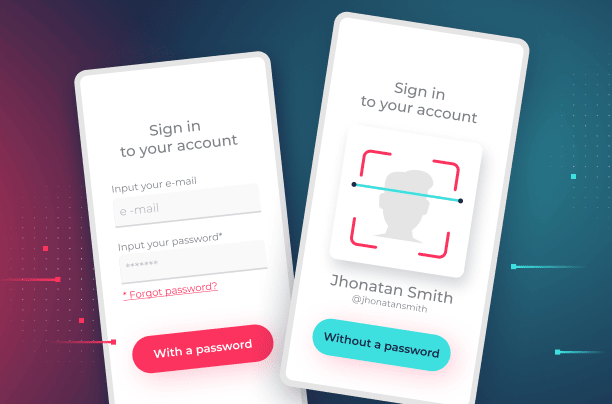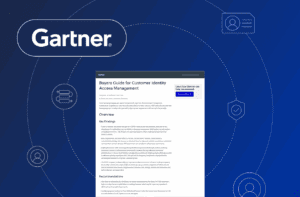Transition to Passwordless
Customer demand for passwordless authentication is rapidly growing. We all crave a simpler experience which is why it’s unsurprising to learn that according to a Mastercard study, 93% of customers prefer biometric logins to typing in a password. The adoption of passwordless authentication by major tech giants such as Microsoft and Apple is more evidence of the growing momentum behind ditching passwords for good.
However, the transition to passwordless is hard even for those who believe biometrics are the future. After all, we’ve been using passwords for 60 years, and they’ve become a part of daily life — warts and all. Even the most enthusiastic companies and customers can have reasonable doubts about rushing to adoption. It can be hard to understand how passwordless authentication keeps both your customers safe and makes your online journey smoother.
So how do you effectively smooth the transition to a passwordless authentication service like BindID while keeping your customers confident and secure?
At the surface level, it may seem like going passwordless carries a serious adoption curve, but the growing pains are easily mitigated by three simple steps which we’ve outlined below.

1. Educate customers on the benefits of passwordless
Educating customers of the benefits of passwordless authentication and addressing any concerns they may have is key to successfully transitioning to passwordless authentication.
Get your customers on board by clearly explaining the many benefits of using a passwordless authentication service compared to traditional credential-based authentication. This includes, security, ease of use and cross-channel functionality.
Be up front and address any common concerns such as how their biometric information is kept secure. With BindID, customer biometric information is never shared. Since it never leaves the device it can never be intercepted or stolen unlike passwords and OTPs.
Make sure to reiterate and explain to customers why going passwordless is beneficial to their entire online experience. Remind customers that they can opt into passwordless at any time by using prompts such as: “Still not passwordless? Logging in with a fingerprint or facial ID will save you time and keep your account more secure. Learn more now.”

2. Motivate adoption with UX changes
Certain user experience changes can motivate customers to make the switch. Placing a button with user friendly phrasing such as, “Sign in without a password” gives customers the option to leave traditional authentication in the past.
By offering customers the option to either sign up using their credentials or to sign in without a password, you can phase in passwordless authentication. In this way, customers who are already familiar with the method of biometric authentication will be happy to make the switch. Those who require a bit more time and information will still have the traditional option.
An opportune time to introduce passwordless authentication is when a customer has already been disrupted due to passwords. You can attract new adopters when they are trying to recover their account after hitting that dreaded “forgot my password” button. Not only will they be able to easily recover their account, but also the switch over to passwordless authentication will be seamless. In this way, the value of a passwordless service is felt immediately by the customer and also the business.
In some cases, you could consider limiting the functionality for customers who don’t opt into passwordless — both as a security measure and as a way to motivate passwordless adoption. Until they switch, continue to educate them on how it keeps their biometrics safe on their devices. Let them know: “Identifying data is never sent over the web or stored in a database that hackers could target. Going passwordless prevents account takeover fraud.”
3. Provide support to smooth the transition
Customers want to feel reassured and supported, which is why you need to provide ongoing support throughout the transition to passwordless authentication. Making sure that support is provided and is explicitly visible is essential to keeping customers confident in your passwordless solution.
Ways to show your customers you’re there for them:
- Make support buttons or dialogues related to passwordless friendly and clear
- Use prompts, splash screens or pop ups throughout the customer identity journey to reassure customers that they are in fact using a secure service
- Ensure your support team is ready to handle any issues that may come up
Final thoughts on the transition to passwordless
While going passwordless can seem like a big change to consumers, once you explain just how easy it is, provide clear incentives and show that you’re actively supporting them throughout the journey, they will jump on board. Most consumers already use a biometric to unlock their smartphones, and the user experience is very similar.
Ready to make the shift to easy and secure passwordless customer authentication? Learn more about BindID today!



